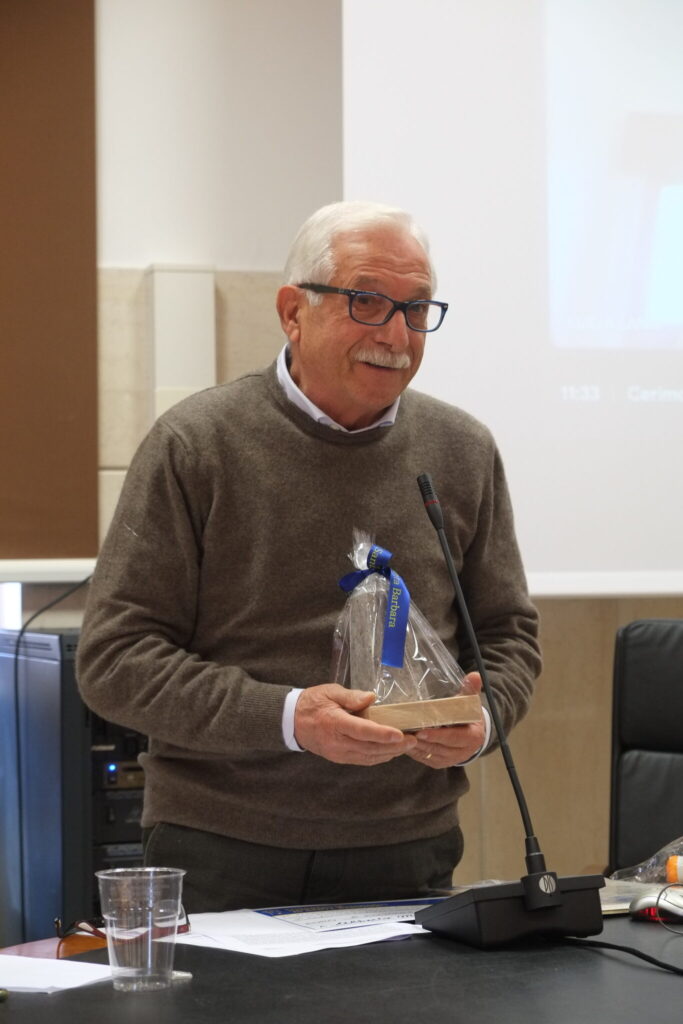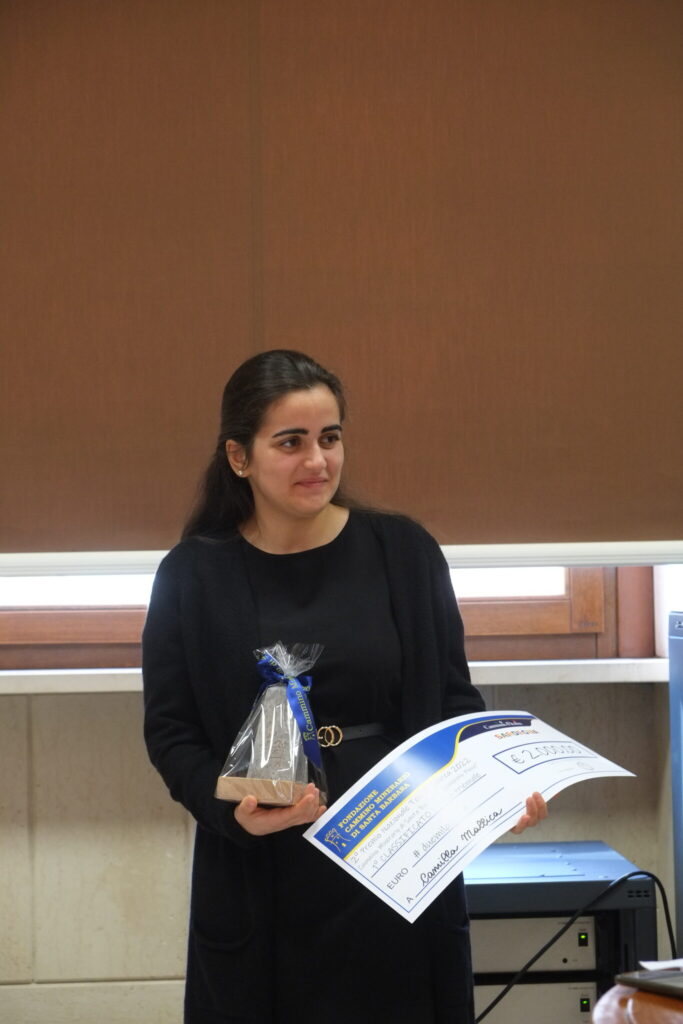Last Saturday, in the Aula Magna of the “Asproni – Fermi” Mining Institute in Iglesias, the final award ceremony of the Degree Thesis Award for the Santa Barbara 2022 “Giampiero Pinna” Mining Path was held, in the presence of the Award Commission, the The Pinna family, the President of the CMSB Foundation Mauro Usai, the representatives of the “Asproni – Fermi” Institute, the candidates for the prize, some classes of the Institute and an attentive public.
The commission, made up of university professors and journalists, in charge of evaluating the works presented, proclaimed the winners:
Camilla Mallica , prize for the best three-year thesis entitled: Proposal for a tourist and cultural itinerary in Sardinia. “On the lead road from San Gavino Monreale to Piscinas’ .
With the following motivation:
The degree thesis, starting from a careful analysis and representation of the environmental-territorial landscape context, proposes a tourist-cultural itinerary with which it intends to unite and reinterpret in tourist terms the various sites referring to the Arburese and Guspinese industrial past, characterized from the mining and metallurgical sector.
In particular, the examination and representation of mining tourism and the connections with potential tourist flows in the territories of San Gavino Monreale, Guspini and Arbus were appreciated. Also noteworthy is the representation of the phenomenon of Living Industry Tourism , as tourism aimed at corporate awareness, which includes the itinerary “On the lead road”, which winds for about 42 km, with 6 stages and connects the foundry, the mines of Montevecchio, the village of Ingurtosu and the former small port of Piscinas, following an interesting narrative thread centered on the mining communities and workplaces.
The thesis is developed with robust bibliographic references and references to sustainability in accordance with the 2030 Agenda, suitably accompanied by a valid iconographic apparatus, with the aim of achieving social, economic and environmental objectives.
For these reasons, the thesis presented can be considered of general and concrete interest, because it contributes to the definition of a contextualized and flexible project in the reference territorial landscape context, always looking for innovation between historical memory and prosperous future scenarios.
Federico Aresu and Alberto Melis , prize for the best master’s thesis entitled “Mine Sardinia. Renaturalization project of the Ingurtosu mine in the system of the historic Geomining Park of Sardinia” .
With the following motivation:
The research offers, starting from a careful analysis and representation of the territorial structure that distinguishes the territory of south-west Sardinia, an interesting proposal for the re-naturalisation and re-functionalisation of the architectural and landscape heritage which from Ingurtosu, passing through Naracauli, ends in Piscinas .
The multi-scale readings and the construction of typological abacuses that classify the heritage of industrial archeology and a renewed sensitivity for the recovery of “project matrices” such as vegetation, paths and structures functional to the activity of the mines, lay the foundations for the interventions of ecological recomposition of an area that brings together landscape quality and strong environmental fragility.
The design intervention, with the aim of re-establishing a balance between man and the environment, between the ruins and nature, provides for the use of a gentle mobility that connects the village, the washery, and the dunes and defines a series of minimal and punctual interventions capable of reconstructing the morphological continuity along the slopes, the orientation along the paths characterized by hairpin bends and jumps in altitude, guaranteeing visual openings and the rediscovery of unexpected backdrops.
For these reasons, the thesis presented constitutes a work of great interest in which the choices, well communicated through the graphics, contribute to the definition of a flexible, non-rigid landscape architecture project, which works over time, based on the answers that the he environment gives back, in full respect of a territory that has suffered, which suffers but which retains its strong, essential and recognized identity.
Giulia Vaccargiu , special mention for the Master’s thesis entitled “Class newspapers in Sardinia between 1924 and 1950. Linguistic analysis of the corpus of the Historical Archive of the Iglesias Educational Circle, Didactic Direction – 1st circle”
With the following motivation:
The research, which concerns the history of the schools of a series of mining centers crossed by the route of the Santa Barbara Mining Path, gives the reader a simple and profound insight into the daily life of young people and families residing in the settlements linked to mining work.
Through the observations and comments of the teachers, it is possible to know and appreciate the difficulties of daily life, the economic and social aspects that have characterized the world of workers, which have always influenced the behavior and attitudes of young students. Without neglecting the linguistic aspects, linked for example to the use of the Sardinian language and to the control of the fascist regime on basic education, the thesis offers an unprecedented possibility of knowing and touching the daily life of the mining villages, profoundly influenced by the industrial crises, harsh trade union demands and dramatic famines linked to the Second World War.
The thesis is a work of great historical value, which deserves to be disclosed and told to the wider public, even with the possibility of becoming the starting point for the creation of a book of testimonies of great value and impact.
In addition to the cash prize provided for in the announcement, the winners were given a free miniature reproduction of the trachyte stones that mark the arrival points of the stages of the journey.
We thank all the participants who wanted to attend the event both in person and by videoconference, the Commission that awarded the prizes and all the people who collaborated in the success of this edition.


